For "Travel Tuesday":
Just outside the Big Bend area is Terlingua, TX
The Road to Terlingua.
"Terlingua (Ghost Town) is a mining district in southwestern Brewster County, Texas, United States. It is located near the Rio Grande and the Texas villages of Lajitas and Study Butte, Texas, as well as the Mexican village of Santa Elena. The discovery of cinnabar, from which the metal mercury is extracted, in the mid-1880s brought miners to the area, creating a city of 2,000 people. The only remnants of the mining days are a ghost town of the Howard Perry-owned Chisos Mining Company and several nearby capped and abandoned mines, most notably the California Hill, the Rainbow, the 248 and the Study Butte mines. The mineral terlinguaite was first found in the vicinity of California Hill.
Terlingua, Texas - a panoramic view from TX Park Road 170
Terlingua, Texas - another panoramic view
Terlingua in 1936.
"Due to its proximity to Big Bend National Park, today Terlingua is mostly a tourist destination. Rafting on the Rio Grande, mountain biking, camping, hiking, and motorcycling are some of the outdoor activities favored by tourists." From Wikipedia, the free encyclopedia.
____________
Tales From Terlingua
"On the western edge of one of Texas’ greatest natural treasures, Big Bend National Park, lies the true Texas ghost town of Terlingua. The eerie ruins of a once prolific mining town are sure to satisfy the interests of those looking for a haunting adventure during the Halloween and Dia de los Muertos season.

The Perry Mansion.
In 1903, Chicago industrialist Howard E. Perry established the Chisos Mining Company at Terlingua to capitalize on the rich cinnabar deposits, the ore processed to produce quicksilver, or mercury. The Chisos Mining Company soon became the most successful mine in the region and eventually one of the nation’s leading producers of quicksilver. Perry was notoriously secretive and many historical accounts suggest his less-than-ideal working conditions and sly business practices prompted his evasiveness. “For Perry, secrecy was an occupational necessity—a tenet by which one lived and survived—and in Terlingua, secrecy was synonymous with mystery and distrust,” wrote Texas historian Kenneth Baxter Ragsdale.
In 1906, after returning from a visit to the quicksilver mines of Almaden, Spain, Perry constructed a mansion overlooking Terlingua, inspired by the Moorish architecture he had seen in Spain. Though he rarely visited the mine town, Perry’s mansion, which he eventually expanded to include two stories and nine bedrooms, was said to serve as a constant reminder to Terlingua inhabitants that Perry—and Perry alone—held the keys to the city.

By 1913, the prosperity of the mine allowed for many modern comforts, such as a reliable water supply, mail delivery three times weekly, a school, telephone service, a company-owned hotel, and a general store that drew customers from as far as 100 miles away. Though details of Perry’s operation and life are obscure, reports indicate that by 1934, the Chisos Mining Company had earned more than $12 million in quicksilver production over three decades.
With the ending of World War I, the demand for mercury began a sharp decline. On October 1, 1942, the Chisos Mining Company filed for bankruptcy. The mine’s closure as well as an influenza outbreak caused the majority of Terlingua residents to flee the town, leaving behind their homes and businesses.
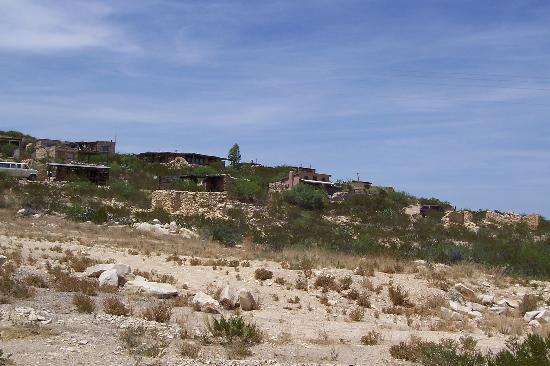
Today, the ruins of several adobe dwellings and mine shafts enhance Terlingua’s ghost-town appeal. The Terlingua Cemetery also harkens back to the early 1900s with many simple, weathered wooden crosses still standing at the gravesites of miners and their family members.
Two of the original businesses remain in use today: the general store and movie theater. Sitting side by side, the Terlingua Trading Co., now a gift store, and the Starlight Theatre, now a live music venue and restaurant, are Terlingua’s main attractions. The front porch of the general store is somewhat of a historical marker, where tourists and locals alike gather to drink beer, watch the sunset over the Chisos Mountains and share legends and tall tales of the colorful mining town.
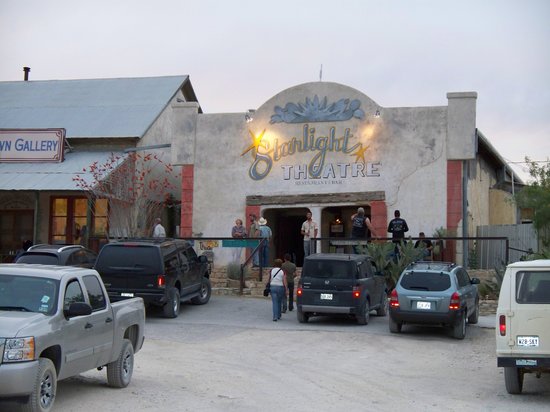
Though Terlingua maintains several hundred residents today and a steady beat of tourists throughout the year, the town truly comes to life every November, on the first Saturday of the month, when thousands of “chiliheads” travel to Terlingua for two famous annual chili cookoffs: the Chili Appreciation Society International and the International Frank X. Tolbert - Wick Fowler Championship Chili Cookoff.

Whatever the reason for your travels to Terlingua, this unique West Texas town is sure to live up to its unofficial motto: “expect the unexpected.” "
Sources: Exploring the Big Bend Country; Historic Texas from the Air; Ghost Towns of Texas; Quicksilver: Terlingua and the Chisos Mining Company; Texas State Historical Association; The Best American Travel Writing; West Texas Weekly
____________
Big Bend and Terlingua Hot Chili
"Big Bend National Park in West Texas is one of the least visited national parks, but is well-worth the long drive to get there. And if you visit at the right time of year, you can sample the fixings’ at the Terlingua International Chili Championship held a few miles away. 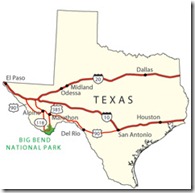
A Texan we chatted with on the way to Big Bend told us “where you’re going isn’t the end of the earth, but if you stand on the roof of your camper, you’ll be able to see it.”
This area is a desert with mountains, beautiful and grand in its own way, but very different than the national parks in the Rockies and the northwest.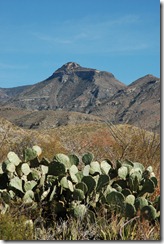 The 800,000 acre park is located on the Rio Grande, a stone’s throw from Mexico. Terlingua is the closest town to the park, and it is mostly a ghost town. There are a couple of small stores and gas stations, a bank, a post office, a campground, and a couple of cafes in Terlinqua. Each year on the Wednesday before the first Saturday of November the four day chili celebration begins, culminating on Saturday with the Terlingua International Chili Championship which is said to be a cross between Woodstock, Burning Man, and a big tailgate party.
The 800,000 acre park is located on the Rio Grande, a stone’s throw from Mexico. Terlingua is the closest town to the park, and it is mostly a ghost town. There are a couple of small stores and gas stations, a bank, a post office, a campground, and a couple of cafes in Terlinqua. Each year on the Wednesday before the first Saturday of November the four day chili celebration begins, culminating on Saturday with the Terlingua International Chili Championship which is said to be a cross between Woodstock, Burning Man, and a big tailgate party.
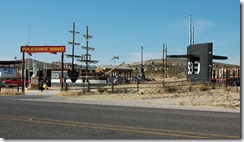
A strange site in Terlinqua is what I think is a private home (a trailer with some unusual yard decorations -- a sailing ship, a full-size submarine conning tower rising from the sand, and the Statue of Liberty), and a sign that says “Passing Wind.” Once I learned of the chili cooking contest, the sign became more understandable.
Big Bend National Park has three park-operated campgrounds as well as a full-hookup concession RV Park. Be sure to check in advance that your rig will be able to negotiate some of the tight roads in the park. There are several off-site campgrounds within a few miles of the park as well. The Lajitas Golf Resort and Spa is a few miles west of Terlinqua and boasts a surprisingly nice RV park, restaurant and equestrian center."
From: http://www.rvshortstops.com/2011/04/big-bend-and-hot-chili.html
Photos: Lew Pinsker Map courtesy National Park Service.
____________
On This Day:
King Tut's sarcophagus uncovered, Jan 3, 1924:
"Two years after British archaeologist Howard Carter and his workmen discovered the tomb of the Pharaoh Tutankhamen near Luxor, Egypt, they uncover the greatest treasure of the tomb--a stone sarcophagus containing a solid gold coffin that holds the mummy of Tutankhamen.
When Carter first arrived in Egypt in 1891, most of the ancient Egyptian tombs had been discovered, although the little-known Pharaoh Tutankhamen, who had died when he was a teen, was still unaccounted for. After World War I, Carter began an intensive search for "King Tut's Tomb," finally finding steps to the burial room hidden in the debris near the entrance of the nearby tomb of King Ramses VI in the Valley of the Kings. On November 26, 1922, Carter and fellow archaeologist Lord Carnarvon entered the tomb, finding it miraculously intact.
Thus began a monumental excavation process in which Carter carefully explored the four-room tomb over four years, uncovering an incredible collection of several thousand objects. The most splendid architectural find was a stone sarcophagus containing three coffins nested within each other. Inside the final coffin, made out of solid gold, was the mummy of the boy-king Tutankhamen, preserved for more than 3,000 years."
___________
Franklin Roosevelt founds March of Dimes, Jan 3, 1938:
"Franklin Delano Roosevelt, an adult victim of polio, founds the National Foundation for Infantile Paralysis, which he later renamed the March of Dimes Foundation, on this day in 1938. A predominantly childhood disease in the early 20th century, polio wreaked havoc among American children every summer. The virus, which affects the central nervous system, flourished in contaminated food and water and was easily transmitted. Those who survived the disease usually suffered from debilitating paralysis into their adult lives. In 1921, at the relatively advanced age of 39, Roosevelt contracted polio and lost the use of his legs. With the help of the media, his Secret Service and careful event planning, Roosevelt managed to keep his disease out of the public eye, yet his personal experience inspired in him an empathy with the handicapped and prompted him to the found the March of Dimes.
In 1926, Roosevelt started the non-profit Georgia Warm Springs Foundation on the site of the springs he visited to partake of the waters' therapeutic effects. Twelve years later, he reinvented the charity as the National Foundation for Infantile Paralysis (NFIP). The NFIP was a non-partisan association of health scientists and volunteers that helped fund research for a polio vaccine and assisted victims on the long path through physical rehabilitation. Funded originally through the generosity of wealthy celebrities at yearly President's Birthday Balls, the foundation could not raise money fast enough to keep pace with polio's continued toll on America's children and, during the Depression, the polio epidemic worsened. In 1938, Roosevelt decided to appeal to the general public for help. At one fundraiser, celebrity singer Eddie Cantor jokingly urged the public to send dimes to the president, coining the term March of Dimes. The public took his appeal seriously, flooding the White House with 2,680,000 dimes and thousands of dollars in donations.
In subsequent years, the March of Dimes continued to lead lucrative fundraising campaigns that set the model for other health-related foundations. In 1941, the foundation provided funding for the development of an improved iron lung, which helped polio patients to breathe when muscle control of the lungs was lost. The March of Dimes appointed Dr. Jonas Salk to lead research for a polio vaccine in 1949. Roosevelt, who died in 1945, did not live to see Salk develop and test the first successful polio vaccine in 1955."
_____________
Alaska admitted into Union, Jan 3, 1959:
"On January 3, 1959, President Eisenhower signs a special proclamation admitting the territory of Alaska into the Union as the 49th and largest state.
The European discovery of Alaska came in 1741, when a Russian expedition led by Danish navigator Vitus Bering sighted the Alaskan mainland. Russian hunters were soon making incursions into Alaska, and the native Aleut population suffered greatly after being exposed to foreign diseases. In 1784, Grigory Shelikhov established the first permanent Russian colony in Alaska on Kodiak Island. In the early 19th century, Russian settlements spread down the west coast of North America, with the southernmost fort located near Bodega Bay in California.
Russian activity in the New World declined in the 1820s, and the British and Americans were granted trading rights in Alaska after a few minor diplomatic conflicts. In the 1860s, a nearly bankrupt Russia decided to offer Alaska for sale to the United States, which earlier had expressed interest in such a purchase. On March 30, 1867, Secretary of State William H. Seward signed a treaty with Russia for the purchase of Alaska for $7.2 million. Despite the bargain price of roughly two cents an acre, the Alaskan purchase was ridiculed in Congress and in the press as "Seward's folly," "Seward's icebox," and President Andrew Johnson's "polar bear garden." Nevertheless, the Senate ratified purchase of the tremendous landmass, one-fifth the size of the rest of the United States.
Despite a slow start in settlement by Americans from the continental United States, the discovery of gold in 1898 brought a rapid influx of people to the territory. Alaska, rich in natural resources, has been contributing to American prosperity ever since."
_____________
Yesterday:
Misty and I went down to get Jay. During her walk-about, she was more intent on her seeking, sniffing, and marking than the last couple of days. So she seems to be a lot better.
On new year's day while I was at their dinner, there was a Moving Sale going on nearby. Jay had bought a computer and monitor for $20. He doesn't know what operating system it has, if any, and didn't get the cords. He was mostly distracted by the young lady relative who was helping with the sale. They had a short date that night, and now he can't stop thinking about her. He re-activated his old pre-paid 30-day cell phone, and I am pretty sure he is going to give it to her. He re-activates it here, as it is my computer and credit card which is on the account, then he gives me the money.
When Jay gets his mind off on a tangent, he cannot concentrate on what he is doing, so all we did was move some cabinets around in my computer area. Then I took him home.
It is really cold outside, and I am supposed to groom Sam's poodle, Mikey, today.
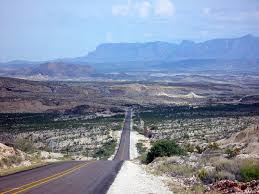



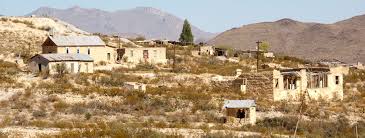/_SAN5372.jpg)
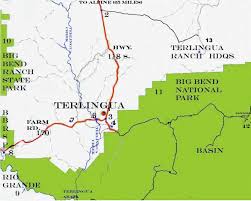
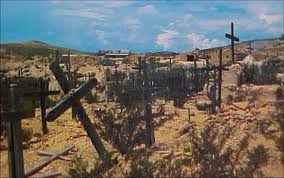















4 comments:
Just wondering, think maybe Misty just missed the kittens that were adopted?
BTW, I have been to Terlingua and met some of the people there. Was thinking about moving to that area, but reconsidered; would be a lot of work for an old guy like me.
OOPS! I commented on the wrong day. Oh well, at least I commented. LOL!
Thank you for your comments, Sandra and DD.
Dick: She doesn't have much to do with the cats, she ignores them. I think she must have eaten something down at Jay's. I caught him giving onion gravy to his dog which is very toxic for dogs. Maybe she got into it too.
I would like to visit the Terlingua area again, but I wouldn't want to move there.
Happy Tails, and Trails, Penny.
Post a Comment